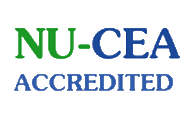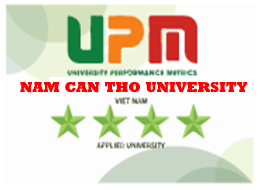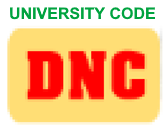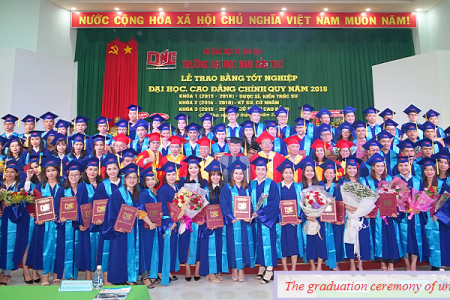Apr 21,2023
Library
LIBRARY
1. INTRODUCTION
Nam Can Tho University Library (NCTUL) was established in January 2013, under the NCTU Training Department. On October 23, 2014, Nam Can Tho University Electronic Library was established with a staff of three people, including Ms. Vo Thi Hong Mai and two others. On May 21, 2015, the Chairman of the University Council of Nam Can Tho University signed a decision appointing Ms. Vo Thi Hong Mai as the Head of the Library until now.
To meet the development and training needs of the university, and to meet the learning and research needs in the context of most university libraries converting to digital materials, in September 2017, NCTUL inaugurated a 4-story Electronic Library building with a total area of 3,503 m2. The traditional library on the 2nd-floor houses specialized books for the fields that the university is currently offering, reference books/journals/specialized dictionaries for readers to borrow and consult. The university is actively building and developing a modern library, applying information and communication technology to serve the most efficient learning, teaching, and scientific research needs of faculty, lecturers, and students.
2. FUNCTIONS AND TASKS
The NCTUL operates according to the general functions, duties, and powers of the Library sector. The Library work organizes and implements the storage, exploitation, updating, and backup of information data, specialized reference books, reference dictionaries, specialized journals, and electronic documents to serve teaching, learning, and scientific research for faculty, staff, and students at the university.
Mission – Authority
The NCTUL aims to become a Library Information Center to supply specialized books, newspapers, and magazines, in both print and electronic formats. The Library regularly receives teaching materials/lectures, graduation theses, and research topics from faculty and students. The Library manages storage, and preservation of purchased or donated materials in accordance with regulations; conducts annual surveys to gather feedback on improving reader services; organizes activities to foster a sense of community between readers and the Library; expands cooperative relationships and exchanges experiences with other libraries to improve the quality and efficiency of all service types. The Library also develops a library code of conduct that complies with legal regulations; performs comprehensive library activity synthesis, statistics, and timely reporting as required by the leadership and the university administration.
3. PERSONNEL
As of August 2022, the staff at the Nam Can Tho University Library consists of 6 staff with 2 holding master's degrees and 4 holding bachelor's degrees. Three staff members specialized in Library Information Science, one in English, one in Information Technology, and one in Office Administration.
4. ACTIVITIES
Over 10 years after its establishment, the Library gradually affirmed its position as the center of knowledge at Nam Can Tho University. It achieved accreditation for General Education Criteria with Nam Can Tho University in 2018 and achieved accreditation for 8 training programs in Library Criteria in both 2019 and 2021. During the 10-year establishment and development process, NCTU Library has gone through 2 stages: From January 2013 to September 2017.
In 2013, the Library was formed along with the establishment of NCTU University on the 3rd floor of the university dormitory building, with an area of 250 m2. The Library has an open shelf, and books and documents are classified according to the Dewey Decimal Classification. The Library is currently equipped with 60 computers with internet access for students to use.
In September 2017, the Electronic Library was inaugurated in the 4-story library building. The university supported the Library's plans for infrastructure and modern equipment. The Library staff was determined to promote the development of the digital library and to apply information technology and communication to library operations. The Library adopts open-source library software for the development of the digital library to manage paper documents for circulation and renewal.
Book classification was carried out using the Koha open-source integrated software. For digital document management, the DSpace open-source software was used on the library's website to update document records on the OPAC page for online searching and viewing by users. Information about library activities, and book introduction videos through voice-overs were added to inspire listeners.
Video clips were added to the Library's website to introduce and guide students on how to use print and digital resources available at the library, to view online. Students could ask questions and receive immediate answers from the library's administration through the website and Facebook page.
Lecturers and students could search for study and research materials from open-source databases and foreign databases that were purchased annually on the Library's website.
The Library’s website provided information on events and activities of the DNC library and was aimed at many library business software applications. Information about the Library's web pages.



